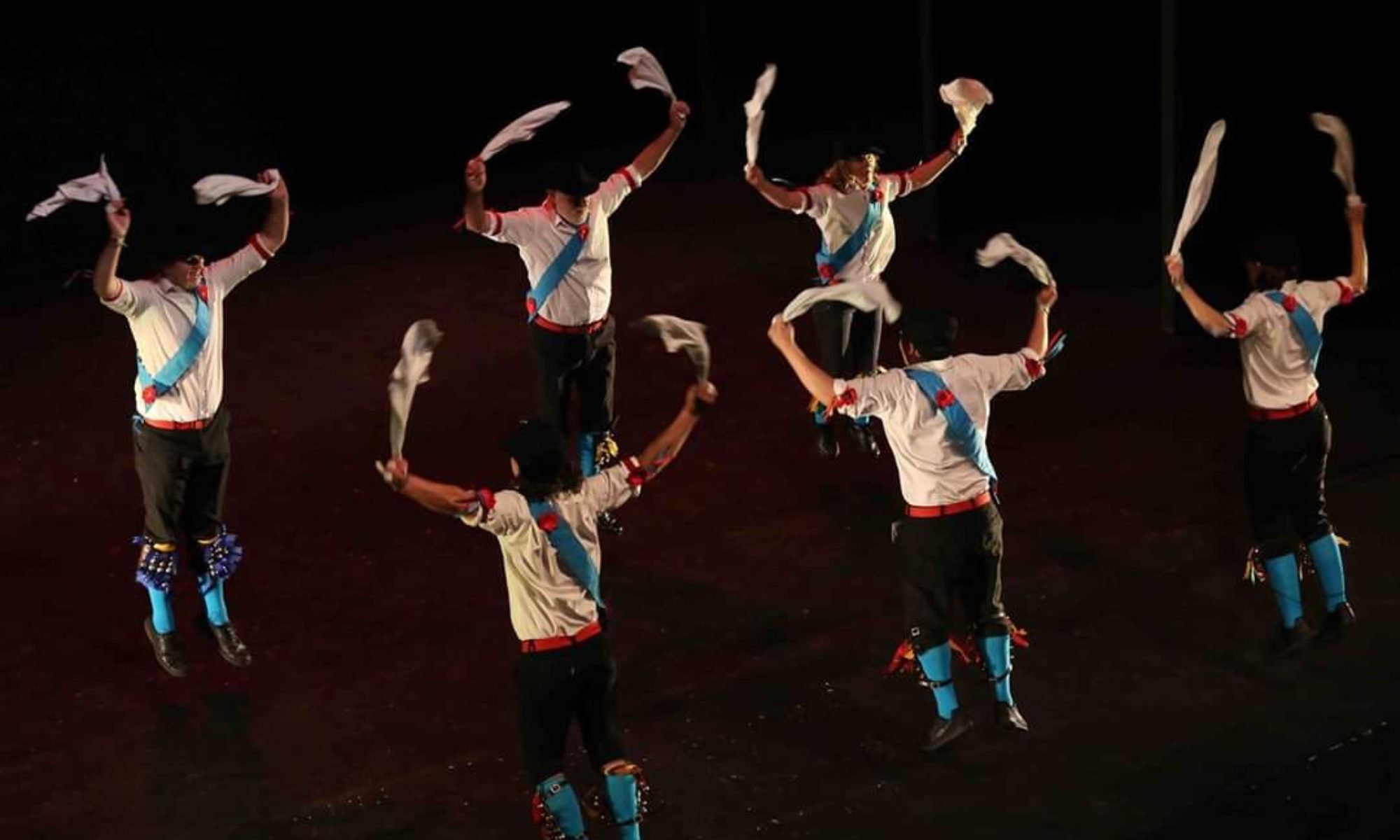
The first time Cecil Sharp came across Longborough was on 5th July 1906 when there was a gang of men mending the sewers outside Sharp’s house at 183, Adelaide Road, Islington. (John) William Spragg and his brother were whistling morris tunes whilst working and Sharp noted down The Belle Isle’s March. Spragg was a dancer who knew both Longborough and Bledington dances.
In 1907 Sharp collected tunes from the Longborough musician John Mason of Stow, published as a collection from Lower Swell, and it was another three years on 2nd May 1910 that Sharp met Harry Taylor over the hill from Longborough at Condicote, where Taylor was thatching a stack. In its shadow on a miserable rainy day the pair rehearsed two dances. Eleven days later Sharp met with Harry Taylor at Longborough, where over both days Sharp collected 10 dances.
After The Great War, the Travelling Morrice visited Longborough and met with Harry Taylor, his son also named Harry and others. The old foreman passed on some more dances and coached the side on their technique commenting on their “real ‘old style’” and their “spring and ‘go’”. On return to Longborough the next year and they followed this suggestions for steps, figures and style, such as the hands in the double step and the show.
Longborough was taken up by Westminster Morris in 1953 for the Queen’s coronation after an exhibition in Cecil Sharp House displayed a Butterworth manuscript with three previously unknown Longborough dances. This exhibition inspired the direction that Westminster would take. Ginger Saunders collected the dances into set of notes and also started re-creating old dances and writing new dances. For example Harry Taylor recalled there was a leapfrog dance but not the detail, and Ginger wrote The Golden Vanity, not just a leapfrog dance, but what he described as “double Longborough”.
In the 70s there was a new interpretation of collector notes and Longborough became high and slow, and the hand movements lost their circular wave to become a shake and at the same time spent a lot longer being held up; a truly dramatic style. A quote from Harry Taylor that “ a Longborough dance, when danced properly, would leave the dancer unable to dance immediately again” was certainly true.
It must have been possible for a side that danced only at Whitsun and practised a couple of weeks beforehand to put on a Longborough Show, and it is that style that Taylor’s Morris have sought. The style that Harry Taylor would recognise and dancing the dances he passed on.
We continue to refine the style as we understand it to be danced, to perform the collected dances, and to extend and develop the tradition.
Taylor’s Morris were formed from a series of workshops held in early 2016 and in our first year entered both solo and double jigs at Sidmouth winning best newcomer and 2nd place in the double jig competition.

